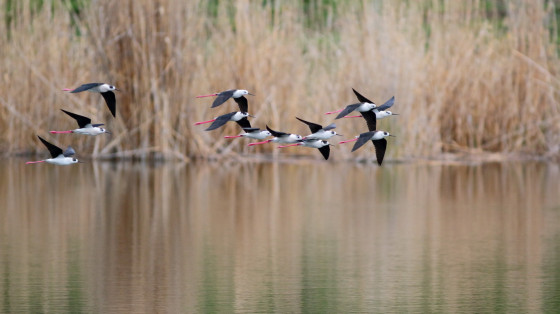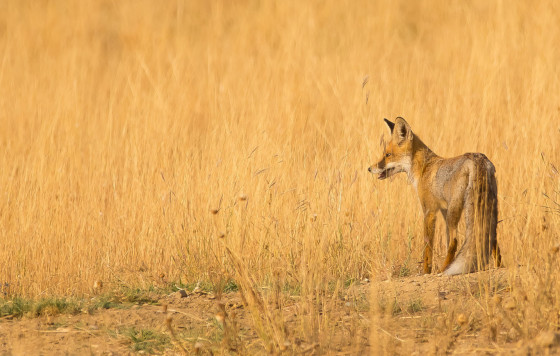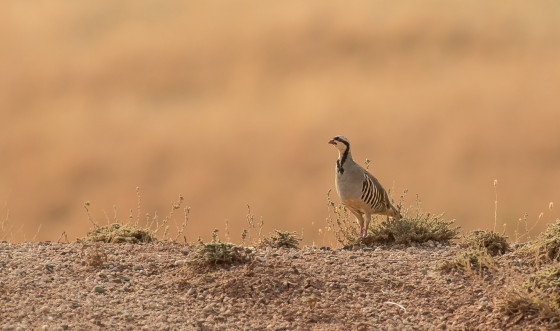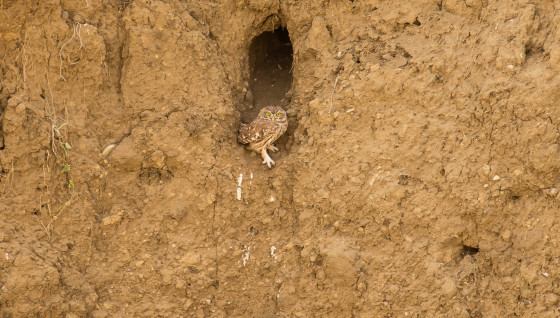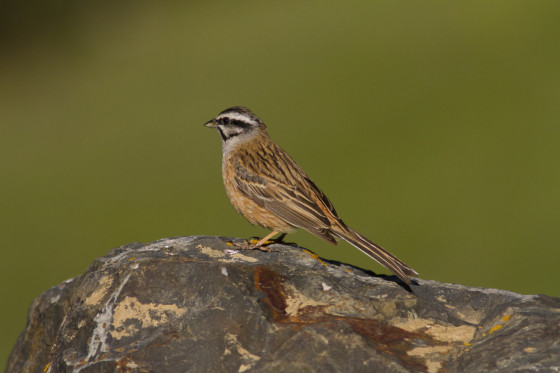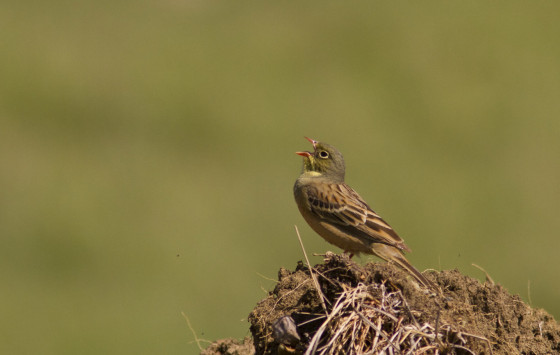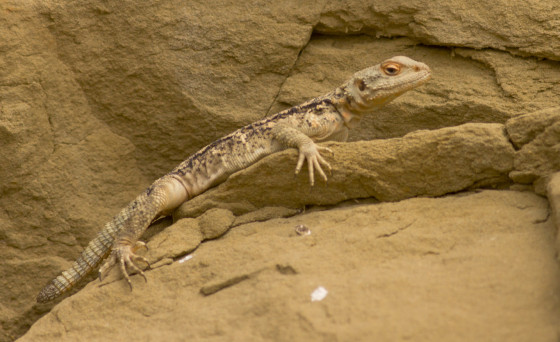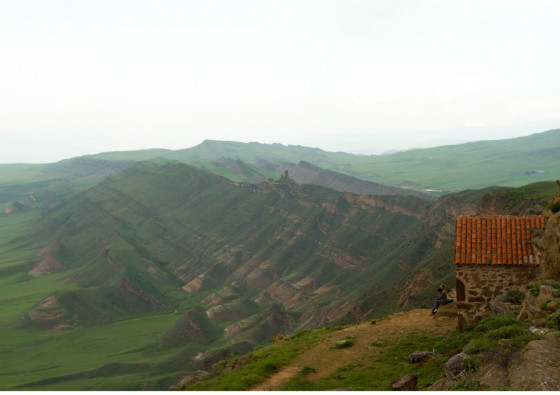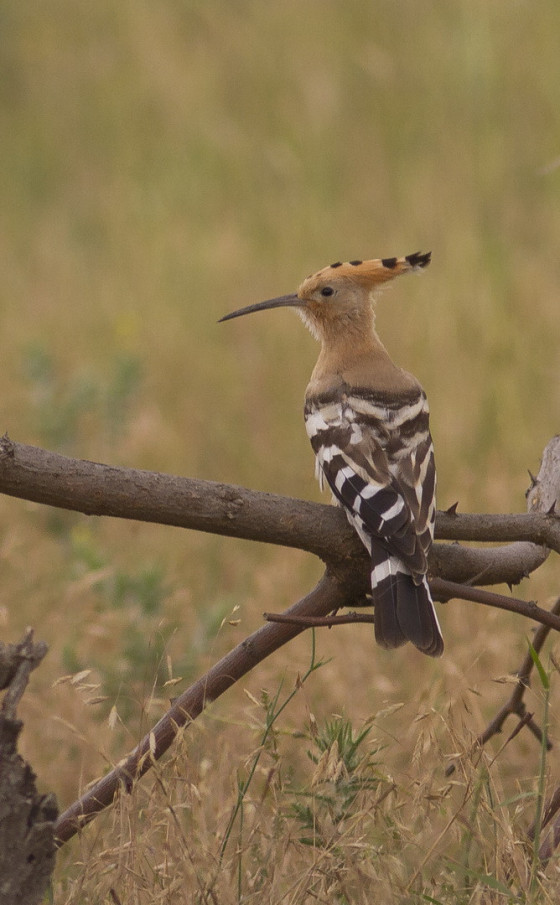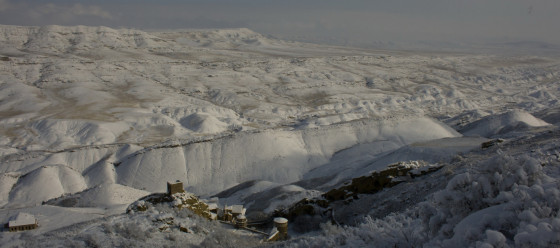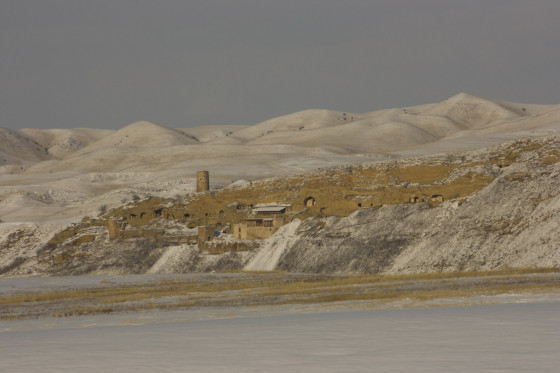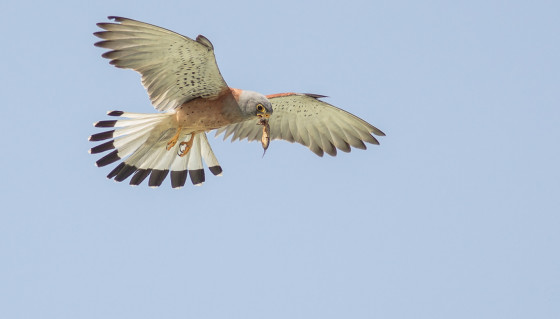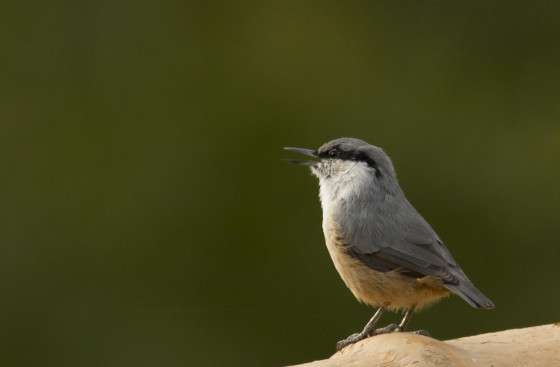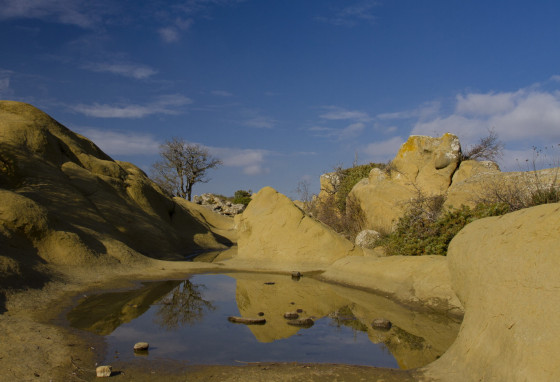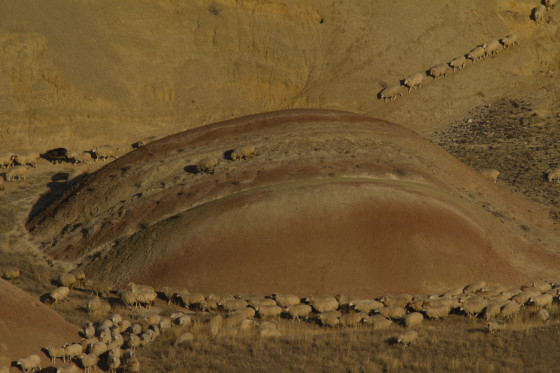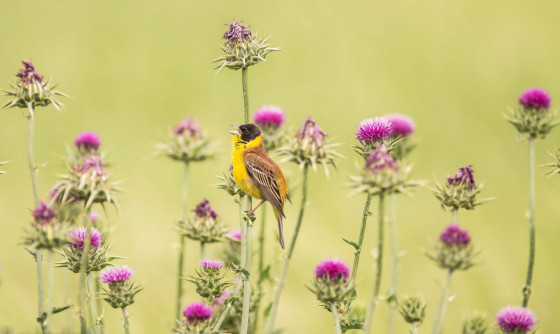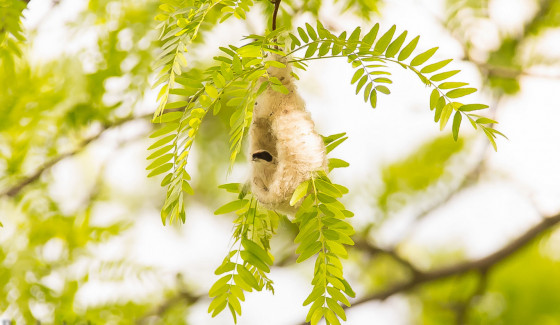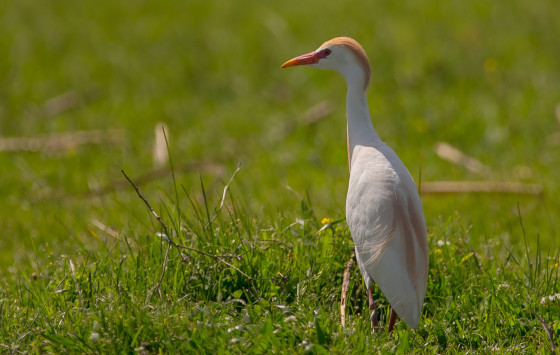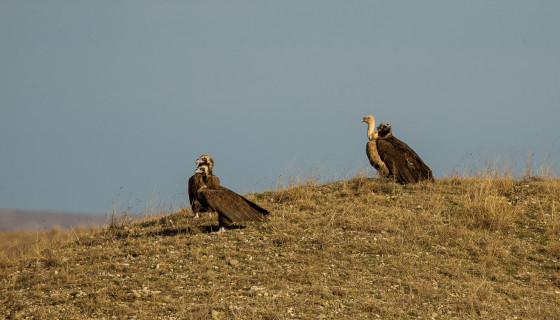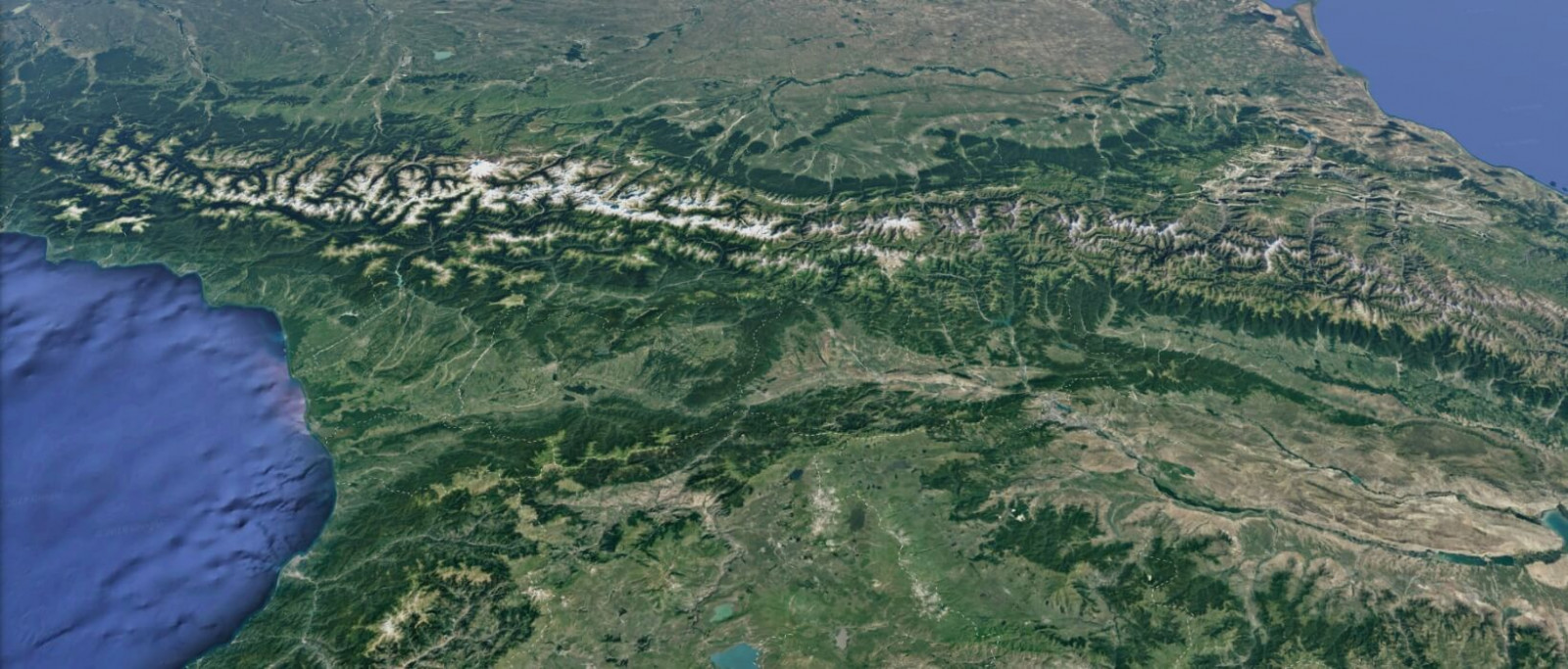Hotspots
Davit Gareji and Jandara Lake
David Gareji is one of the most spectacular sites in Georgia, where historical and wildlife attractions are located side-by-side and can be watched at the same time. Mediterranean-type arid badland landscape with multi-colored clay hills covered with shrub and steppe- like vegetation, the site of one of the oldest Christian monasteries in the world. The site is located in a scarcely populated region southeast of Tbilisi, west of the river Iori valley. The area harbors a mixture of animal and plant species typical for East-Mediterranean and Central Asian landscapes. Most remarkable are vultures and various species of reptiles.
Birds: Key bird species are breeding colonies of Eurasian griffon and Egyptian vultures, breeding imperial eagles, chukar (March through April), roller, hoopoe, blue rock thrush; large aggregations of bee-eaters, rose-coloured starling (May-June), and rock dove. Other attractions for birdwatchers are long-legged buzzard, common kestrel, cinereous vulture, Eurasian sparrowhawk, short-toed snake eagle, and saker falcon. Passerines: calandra lark, crag martin, rufous-tailed scrub robin, isabelline wheatear, finsch’s wheatear, pied wheatear, willow warbler, orphean warbler, lesser whitethroat, rock nuthatch, lesser grey shrike, woodchat shrike, Spanish sparrow, rock sparrow, black-headed bunting, ortolan bunting. Dozens of other species are seen occasionally.
Jandara Lake
The site is a medium-size lake (water surface ca. 10 km2), situated in the steppe landscape southeast of Tbilisi, near the border between Georgia and Azerbaijan. It is an important site for both migratory and nesting waterfowl birds. Warm, dry area around the lake. One-day visits are possible. A little village located at the northern shore of the lake. The area is a favorite site for fishermen.
Birds: Especially high density of birds observed in winter and in early spring (late March), during migration. The lake harbors large aggregations of cormorants including pigmy cormorant, large groups of coots, great crested and little grebes, little and cattle egrets, grey herons, several species of ducks, including mallard, northern shoveler, common teal, garganey, and some others, diving ducks and shelducks, four species of terns and four species of gulls, including great black-headed gull. In the reedbed around the lake, common species are squacco heron, little bittern, night heron, occasionally – black stork, several species of crakes, and various songbirds. In surroundings of the lake, one can watch large groups of rose-coloured starlings and bee-eaters, Eurasian hobby, imperial eagle, roller, hoopoe, several species of shrikes, buntings, and larks.
Other wildlife:The site has a high diversity and density of reptiles, including Levantine viper, Mediterranean tortoise, European glass lizard, Caucasian agama, striped lizard, and rapid fringe-toed lizard. Occasionally found species are long-legged skink, four-striped racer, collared eirenis, cat snake, lizard snake and some others. The area has a breeding site of Syrian spadefoot toad. Huge tadpoles of this species may be observed in May and June. Many green toads and lake frogs. Mammals to be seen are wolf, fox, badger, rock marten, gerbils and Brandt’s hamsters. A number of plants typical for dry Mediterranean-like landscapes are common: Most common are red juniper, wild pomegranate, berberis, celtis, wild pear, fig, smoke tree, Christ thorn. A very special attraction is the Georgian iris, a small plant with very nice flowers, which can be seen in April-early May. A local endemic distaff species, Salvia gareji, is thought to be introduced by monks from the Jerusalem area in the early medieval time.
What to expect
Journey For Life
Although Georgia covers only one-seventh of the Caucasus, it aggregates nearly every kind of habitat and biome found in the region. The country’s species diversity far surpasses two-thirds of the species found throughout the entire Caucasus, comprising nearly 1% of the planet’s animal and plant species.
Climate varies from dry warm continental in the southeast of Georgia to very humid temperate in the west; Mtirala in the southwest has 4,000 mm of annual precipitation, exceeding any other geographic point in continental western Eurasia. The country lies along the eastern coast of the Black Sea and southern slopes of the Great Caucasus Mountains, at the same latitude as Washington D.C., northern Greece and northern Spain. Humid areas have the greatest diversity of endemic species. Nearly a quarter of the terrestrial vertebrate and fish species, and even more of the flowering plants of Georgia are endemics of the Caucasus region.
